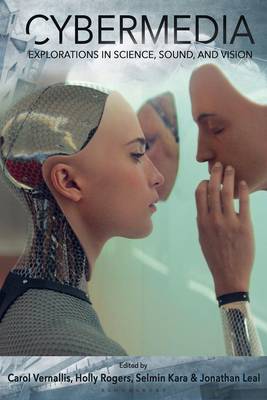
Bedankt voor het vertrouwen het afgelopen jaar! Om jou te bedanken bieden we GRATIS verzending (in België) aan op alles gedurende de hele maand januari.
- Afhalen na 1 uur in een winkel met voorraad
- In januari gratis thuislevering in België
- Ruim aanbod met 7 miljoen producten
Bedankt voor het vertrouwen het afgelopen jaar! Om jou te bedanken bieden we GRATIS verzending (in België) aan op alles gedurende de hele maand januari.
- Afhalen na 1 uur in een winkel met voorraad
- In januari gratis thuislevering in België
- Ruim aanbod met 7 miljoen producten
Zoeken
Cybermedia
Explorations in Science, Sound, and Vision
€ 125,95
+ 251 punten
Omschrijving
We're experiencing a time when digital technologies and advances in artificial intelligence, robotics, and big data are redefining what it means to be human. How do these advancements affect contemporary media and music? This collection traces how media, with a focus on sound and image, engages with these new technologies. It bridges the gap between science and the humanities by pairing humanists' close readings of contemporary media with scientists' discussions of the science and math that inform them.
This textincludes contributions by established and emerging scholars performing across-the-aisle research on new technologies, exploring topics such as facial and gait recognition; EEG and audiovisual materials; surveillance; and sound and images in relation to questions of sexual identity, race, ethnicity, disability, and class and includes examples from a range of films and TV shows including Blade Runner, Black Mirror, Mr. Robot, Morgan, Ex Machina, and Westworld. Through a variety of critical, theoretical, proprioceptive, and speculative lenses, the collection facilitates interdisciplinary thinking and collaboration and provides readers with ways of responding to these new technologies.
This textincludes contributions by established and emerging scholars performing across-the-aisle research on new technologies, exploring topics such as facial and gait recognition; EEG and audiovisual materials; surveillance; and sound and images in relation to questions of sexual identity, race, ethnicity, disability, and class and includes examples from a range of films and TV shows including Blade Runner, Black Mirror, Mr. Robot, Morgan, Ex Machina, and Westworld. Through a variety of critical, theoretical, proprioceptive, and speculative lenses, the collection facilitates interdisciplinary thinking and collaboration and provides readers with ways of responding to these new technologies.
Specificaties
Betrokkenen
- Uitgeverij:
Inhoud
- Aantal bladzijden:
- 472
- Taal:
- Engels
- Reeks:
Eigenschappen
- Productcode (EAN):
- 9781501357046
- Verschijningsdatum:
- 21/10/2021
- Uitvoering:
- Hardcover
- Formaat:
- Genaaid
- Afmetingen:
- 152 mm x 229 mm
- Gewicht:
- 789 g

Alleen bij Standaard Boekhandel
+ 251 punten op je klantenkaart van Standaard Boekhandel
Beoordelingen
We publiceren alleen reviews die voldoen aan de voorwaarden voor reviews. Bekijk onze voorwaarden voor reviews.








